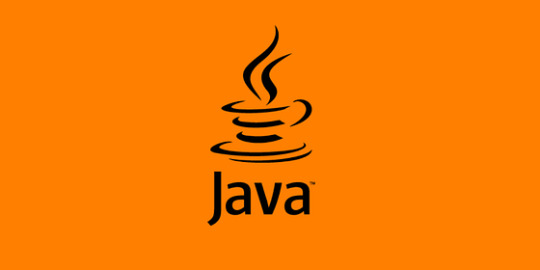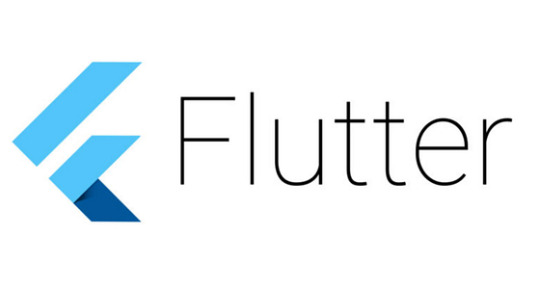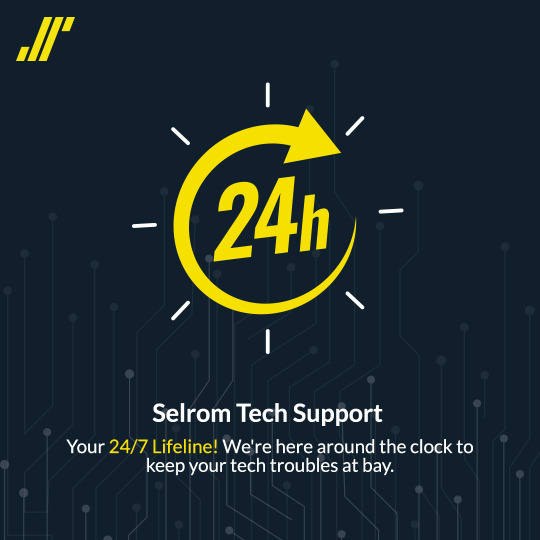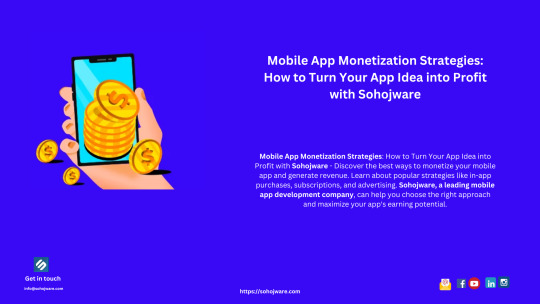#appsdevelopment
Explore tagged Tumblr posts
Text






🚛📱 Revolutionize your logistics business with cutting-edge mobile app solutions! From real-time tracking to AI-powered analytics, discover how technology can transform your operations, boost efficiency, and delight your customers. 🌟✨
📦 Why wait? Optimize your logistics today with Us. 🚛📦✨
Visit now.
#LogisticsApp#MobileAppDevelopment#TechInnovation#LogisticsSolutions#SSTechSystem#RealTimeTracking#AIinLogistics#SupplyChainManagement#BusinessGrowth#TechForBusiness#LogisticsIndustry#AI#analytics#technology#appsolutions#business#india#usa#australia#B2B#sstech system#flutter#webdevelopment#appdevelopment#appsdevelopment
3 notes
·
View notes
Text
Maximise Business Opportunities with Selrom's ERM Software at Your Side.
Visit: www.selrom.com
#Selrom#ERM#tech#software#ERMSoftware#mobileappdesign#businesssoftware#appsdevelopment#technologysolutions#softwaresolutions#Softwares#softwaredeveloper
2 notes
·
View notes
Text
Bus Ticket Booking App Development

Looking for a Bus Ticket Booking App Solution?
Transform your ticketing experience with our online bus booking app development!
Contact us today to learn more! +8801614000401
#androidappdevelopment#iosapp#androidapp#ios#android#appsdeveloper#appsdevelopment#appdevelopment#apps#travel#busticketonline#BusTicketing#BusBookingApp#busticketbooking#bustickets#busbooking
0 notes
Text

Best Programming Languages For Developing Mobile Applications - Sohojware
The mobile application landscape is booming in the United States. With over 260 million smartphone users, the US presents a vast and lucrative market for businesses looking to create a strong mobile presence. But with so many options available, choosing the right mobile application development language can be a daunting task.
This article by Sohojware, a leading mobile app development company, will explore the top programming languages currently used for mobile application development, helping you navigate this critical decision.
Understanding Your Needs
Before diving into specific languages, it’s crucial to understand your project’s unique needs. Here are some key factors to consider:
Target Platform: Are you developing for iOS, Android, or both?
App Complexity: Is your mobile application a simple utility or a feature-rich game?
Development Time and Budget: Some languages offer faster development times, but may come at a higher cost.
Developer Expertise: Does your in-house team have experience with a particular language?
By considering these aspects, you can narrow down the mobile application development language best suited for your project.
Top Programming Languages for Mobile Application Development
Now, let’s explore some of the most popular and effective languages for building mobile applications in the US market:
Swift: Developed by Apple, Swift is the primary language for creating native iOS applications. Known for its speed, safety features, and readability, Swift allows developers to build high-performance mobile applications with a clean and concise codebase. Sohojware’s team of experienced Swift developers can craft mobile applications that leverage the full potential of the iOS ecosystem.

Kotlin: Kotlin is rapidly becoming the preferred language for Android mobile application development. Initially introduced as an alternative to Java, Kotlin offers a more concise syntax and improved developer experience. Additionally, Kotlin is fully interoperable with Java, allowing for a smooth transition for existing projects. Sohojware’s Android developers are proficient in both Kotlin and Java, ensuring your mobile application is built for optimal performance and user experience.

Java: For many years, Java has been the dominant language for Android mobile application development. Its extensive libraries and mature development tools make it a reliable choice for complex projects. While Kotlin is gaining traction, Java remains a strong option, especially for projects with existing Java codebases. Sohojware’s developers can leverage their expertise in both Java and Kotlin to deliver the best possible solution for your mobile application.

React Native: This framework from Facebook allows developers to build mobile applications using JavaScript and React. React Native allows for code reusability across iOS and Android platforms, potentially reducing development time and costs. Sohojware’s team can utilize React Native to create cross-platform mobile applications that deliver a native-like experience.

Flutter: Developed by Google, Flutter is another popular framework for cross-platform mobile application development. Flutter uses its own widget toolkit, offering developers more control over the mobile application’s look and feel. Sohojware’s developers can leverage Flutter to create visually stunning and high-performing mobile applications for both iOS and Android users.

Choosing the Right Language for Your Mobile Application
There’s no single “best” language for all mobile application development projects. The optimal choice depends on your specific needs and goals. Here’s a quick guide to help you decide:
For native iOS development: Swift is the clear winner.
For native Android development: Kotlin is the recommended choice.
For cross-platform development: React Native or Flutter can be good options, depending on your project’s requirements.
Sohojware: Your Trusted Partner for Mobile Application Development
Sohojware is a leading mobile application development company in the US, with a team of experienced and skilled developers. We can help you choose the right language and framework for your project, ensuring your mobile application is successful in the competitive US market.
Contact Sohojware today for a free consultation and discuss your mobile application development needs.
FAQs
Does Sohojware develop mobile applications for both iOS and Android?
Yes, Sohojware has a team of experienced developers for both iOS and Android mobile application development.
Can Sohojware help me choose the right programming language for my mobile application?
Absolutely! Sohojware’s team will assess your project requirements and recommend the most suitable language and framework for your needs.
Does Sohojware offer cross-platform mobile application development?
Yes, Sohojware offers cross-platform mobile application development using frameworks like React Native and Flutter. This allows for code reusability across iOS and Android platforms, potentially reducing development time and costs.
What is the typical timeline for a mobile application development project at Sohojware?
The timeline for a mobile application development project can vary depending on its complexity and scope. However, Sohojware strives to deliver projects within agreed-upon timelines.
Can Sohojware help with mobile application maintenance and updates?
Yes, Sohojware provides ongoing maintenance and support services for mobile applications. We can help with updates, bug fixes, and new feature implementations.
1 note
·
View note
Text

A True Business Partner Ready to Grow Your Business? We create meaningful websites that offer simplistic user experiences, achieve high rankings on the most popular search engines and promote your brand to the widest possible audience. #web #development #company
#seo#expert#bangalore#webapp#development#appsdevelopment#mobileappdevelopment#webdesign#nxtwat#itcompanies#softwarecompany
0 notes
Text
Unlock new opportunities for creativity, innovation, and success in the dynamic world of visual communication by partnering with Axisdigitalpro, a top graphic design and motion design agency.
Learn more at https://axisdigitalpro.com/top-graphic-design-and-motion-design-agency/
📞+91 80898 16482

0 notes
Text

Kami adalah penyedia terkemuka dalam pembuatan website dan aplikasi kustom. Dengan pengalaman bertahun-tahun, kami menghadirkan solusi digital yang sesuai dengan kebutuhan bisnis Anda. Dapatkan website atau aplikasi yang mengesankan dengan desain premium dan fungsionalitas terbaik. Hubungi kami sekarang untuk memulai proyek digital Anda!
PembuatanWebsite #AplikasiKustom #SolusiDigital #DesainPremium #KehadiranOnline #KonsultasiGratis #websitedesign #websitedevelopment
Ini adalah era digital, dan keberadaan online sangat penting. Dengan layanan pembuatan website dan aplikasi kami, Anda dapat menghadirkan bisnis Anda di dunia digital dengan keberadaan yang kuat. Dari website perusahaan yang profesional hingga aplikasi mobile yang inovatif, kami adalah mitra yang Anda butuhkan. Hubungi kami sekarang untuk konsultasi gratis!
#appdevelopment#mobileappdevelopment#applicationdevelopment#appsdevelopment#appareldevelopment#applicationsdevelopment#appdesignanddevelopment#appandwebdevelopment#appledevelopment#apparelproductdevelopment#developmentapp#applictionsdevelopment#appalachiansustainabledevelopment#appencewbsitedevelopment#appdevelopmentcompany#androidappdevelopment#appdevelopmentservices
0 notes
Text
The Future of Flutter: Latest Trends in App Development that will Dominate 2023
#mobileapps#mobileappdevelopmet#appsdevelopment#mobileappdevelopmentindia#appsdevelopmentindia#iosappdevelopment#androidappdevelopment
1 note
·
View note
Text

Absenow Design.
1 note
·
View note
Text

#OffshoreDevelopment#TechTalent#RemoteWork#SoftwareDevelopment#Outsourcing#BusinessGrowth#ITSolutions#CostEfficiency#SSTechSystem#hirededicatedteam#sstech system#webdevelopment#business#australia#b2b#appdevelopment#india#appsdevelopment
2 notes
·
View notes
Text

Guiding you through the tech darkness, 24/7. Selrom - Your beacon of support!
Visit: www.selrom.com
#Selrom#tech#software#Inspirations#Motivation#mobileappdesign#businesssoftware#SoftwareTesting#QAServices#Qa#appsdevelopment#technologysolutions#softwaresolutions#Softwares#softwaredeveloper#softwaredevelopment
0 notes
Text
#fullstackdeveloper#webdeveloper#mobiledeveloper#appsdeveloper#programmer#developer#softwaredeveloper
0 notes
Text
Avalanche (AVAX) vs Solana (SOL)
Welcome to our blog post where we will explore the fascinating world of blockchain platforms and delve into the key differences between Avalanche (AVAX) and Solana (SOL). If you've been keeping an eye on the crypto space, you've likely encountered these two platforms that have been making waves with their unique features and impressive performance. Whether you're an investor looking for the next promising opportunity or a developer seeking the right platform for your project, understanding the distinctions between Avalanche and Solana is essential. So, let's dive in and uncover the exciting contrasts that set them apart! When it comes to consensus mechanisms, Avalanche and Solana have taken different paths. Avalanche utilizes the innovative Avalanche consensus, which employs a meta-stability approach, while Solana combines the power of Proof of History (PoH) and Proof of Stake (PoS) to achieve consensus. These mechanisms play a vital role in the platforms' transaction speeds and scalability, allowing them to process transactions swiftly and handle high volumes of data. Whether you're captivated by Avalanche's sharding technique or Solana's Tower BFT enhancing fault tolerance, there's something unique to appreciate in each platform's approach. Apart from their consensus mechanisms, Avalanche and Solana also differ in their ecosystem focus and use cases. Avalanche shines in the realm of interoperability, aspiring to bridge the gap between various blockchain platforms. Its versatility makes it ideal for use cases like decentralized finance (DeFi), asset tokenization, supply chain management, and gaming. On the other hand, Solana's strength lies in building a scalable ecosystem for decentralized applications. Its high transaction speeds and low latency make it a preferred choice for decentralized exchanges (DEXs), high-frequency trading, gaming platforms, and data-intensive applications. The diversity in their target applications reflects the unique value propositions of Avalanche and Solana. Now that you have a glimpse of the exciting differences between Avalanche and Solana, it's time to dive deeper into each platform's characteristics, scalability, governance models, native tokens, and more. Whether you're seeking a platform that emphasizes interoperability or one that offers a scalable ecosystem for decentralized applications, understanding these distinctions will help you make informed decisions. So, continue reading our blog and discover which platform aligns best with your investment or development goals. Get ready to explore the fascinating world of Avalanche (AVAX) and Solana (SOL)! Here's a quick chart summarizing the key differences between Avalanche (AVAX) and Solana: AspectAvalanche (AVAX)SolanaConsensus MechanismAvalanche consensusProof of History (PoH) + Proof of Stake (PoS)Transaction SpeedFast transaction finality in secondsFast transaction processing, high throughputScalabilitySharding technique for parallel transaction processingTower BFT enhances fault tolerance and scalabilityEcosystem FocusInteroperability and cross-chain communicationScalable ecosystem for decentralized applicationsGovernance ModelDecentralized governance modelHybrid model: On-chain and off-chain governanceNative TokenAVAXSOLUse CasesDeFi, asset tokenization, supply chain, gamingDEXs, high-frequency trading, gaming, data-intensive appsDevelopment and AdoptionCollaboration with traditional finance institutions, enterprise solutionsDiverse range of decentralized applications, institutional investor interest Differences Between Solana and Avalanche Avalanche (AVAX): A Quick Overview Before we dive into the differences, let's begin with a brief overview of Avalanche (AVAX). Avalanche is an open-source platform that aims to provide decentralized applications (dApps) and enterprise solutions with fast, secure, and highly scalable infrastructure. The Avalanche network utilizes a consensus protocol known as Avalanche consensus, which enables quick and efficient transaction processing. With its focus on interoperability, Avalanche aims to connect various blockchain platforms and enable seamless communication and asset transfers between them. Solana: A Brief Introduction Now, let's turn our attention to Solana, another popular blockchain platform. Solana, like Avalanche, is designed to offer high scalability and fast transaction speeds. It employs a unique consensus mechanism called Proof of History (PoH), coupled with Proof of Stake (PoS), to achieve consensus and ensure the network's security. Solana aims to provide a robust ecosystem for decentralized applications, enabling developers to build scalable and efficient solutions. Consensus Mechanisms: Avalanche vs Solana One of the fundamental differences between Avalanche and Solana lies in their consensus mechanisms. Avalanche employs a consensus protocol called Avalanche consensus, which is based on a novel approach called "meta-stability." In Avalanche, validators reach consensus by repeatedly sampling the network and measuring the support for a particular transaction or block. This iterative process ensures quick and finality-driven consensus, making Avalanche highly efficient in processing transactions. On the other hand, Solana combines Proof of History (PoH) and Proof of Stake (PoS) to achieve consensus. Proof of History is a unique time-stamping mechanism that orders transactions before they are executed, providing a historical record of the entire blockchain. This PoH feature enhances the efficiency of Solana's consensus mechanism, as it eliminates the need for expensive consensus algorithms like Proof of Work (PoW). Transaction Speeds and Scalability: Avalanche and Solana's Approach Transaction speed and scalability are crucial factors to consider when comparing blockchain platforms. Avalanche and Solana both excel in these areas, but they employ different strategies to achieve their goals. Avalanche is known for its exceptional transaction speeds. Its consensus protocol enables the network to finalize transactions in a matter of seconds, making it one of the fastest blockchain platforms available. Avalanche achieves high throughput by utilizing a sharding technique, where the network is divided into smaller subsets known as "subnets." This division allows for parallel transaction processing, significantly improving the network's capacity. Similarly, Solana boasts impressive transaction speeds and scalability. By combining Proof of History (PoH) with Proof of Stake (PoS), Solana achieves a high throughput, capable of processing thousands of transactions per second. Solana's architecture also includes a feature known as "Tower BFT" (Byzantine Fault Tolerance), which enhances the network's fault tolerance and further contributes to its scalability. Ecosystem and Applications: Avalanche and Solana's Focus While Avalanche and Solana share the goal of providing a robust blockchain infrastructure, their focus areas and target applications differ slightly. Avalanche emphasizes interoperability and aims to become a bridge between different blockchain platforms. It seeks to enable seamless communication and asset transfers between various networks and facilitate the creation of cross-chain decentralized applications (dApps). Avalanche's platform is designed to support a wide range of use cases, including decentralized finance (DeFi), asset tokenization, supply chain management, gaming, and more. With its focus on interoperability, Avalanche aims to foster collaboration and connectivity within the blockchain ecosystem. On the other hand, Solana focuses on building a scalable and efficient ecosystem for decentralized applications. It aims to support high-performance applications that require fast transaction processing and low latency. Solana's architecture and consensus mechanism make it well-suited for applications such as decentralized exchanges (DEXs), high-frequency trading, gaming platforms, and other data-intensive applications. Solana's ecosystem has witnessed the development of various dApps and projects that leverage its scalability and speed. Governance Models: Avalanche and Solana's Approach Governance plays a vital role in the development and evolution of blockchain networks. Avalanche and Solana employ different governance models to ensure the smooth operation and decision-making within their respective ecosystems. Avalanche utilizes a decentralized governance model where stakeholders, including token holders and validators, have the power to propose and vote on protocol upgrades and changes. This model aims to ensure inclusivity and decentralization, giving participants a say in the platform's development and decision-making processes. Solana, on the other hand, employs a hybrid governance model that combines on-chain governance and off-chain governance. The on-chain governance allows token holders to vote on specific proposals and changes to the protocol. Meanwhile, off-chain governance involves a council of reputable network validators who play a role in decision-making. This hybrid approach aims to strike a balance between decentralization and efficiency, allowing for quick decision-making while considering the network's best interests. Token Economics: AVAX and SOL Token economics is an essential aspect of any blockchain platform, as tokens serve various purposes within the ecosystem. Avalanche and Solana have their native tokens: AVAX and SOL, respectively, which play crucial roles within their respective networks. AVAX is the native cryptocurrency of the Avalanche platform. It is used for transaction fees, staking, and participating in the platform's governance. AVAX tokens are also utilized as a means of exchange within the Avalanche ecosystem, facilitating value transfers between participants and powering the platform's decentralized applications. SOL, the native token of Solana, serves similar functions within the Solana ecosystem. SOL tokens are used for transaction fees, staking, and participating in governance decisions. Additionally, SOL tokens can be utilized within Solana's dApps and projects as a medium of exchange and for accessing various services. Development and Adoption: Avalanche and Solana's Progress Both Avalanche and Solana have made significant strides in terms of development and adoption, attracting attention from developers, investors, and the wider blockchain community. Avalanche has gained traction as a platform for decentralized finance (DeFi) applications. Several DeFi projects have been built on Avalanche, offering users high-speed and low-cost alternatives for activities such as decentralized trading, lending, and yield farming. Avalanche has also seen collaborations with traditional finance institutions and enterprise-focused solutions, expanding its reach beyond the DeFi space. Solana has experienced substantial growth and adoption, especially in the realm of decentralized applications. Its high transaction speeds and low fees have attracted developers looking to build scalable and interactive applications. Solana's ecosystem features a range of projects, including decentralized exchanges, non-fungible token (NFT) marketplaces, gaming platforms, and more. Solana has also garnered attention from institutional investors and has seen integration with various financial and blockchain projects. Conclusion: Unique Paths and Shared Vision In conclusion, Avalanche (AVAX) and Solana may share some similarities, such as their focus on scalability and fast transaction speeds, but they also have distinct characteristics that set them apart from each other. Avalanche places a strong emphasis on interoperability, aiming to connect different blockchain platforms and facilitate cross-chain communication. It utilizes the Avalanche consensus mechanism and sharding techniques to achieve high throughput and scalability. On the other hand, Solana focuses on building a scalable ecosystem for decentralized applications. Its unique combination of Proof of History (PoH) and Proof of Stake (PoS) allows for fast transaction processing and high throughput. Solana's architecture and features like Tower BFT contribute to its scalability and fault tolerance. In terms of governance, Avalanche employs a decentralized governance model, allowing stakeholders to participate in decision-making processes. Solana, on the other hand, adopts a hybrid governance model, combining on-chain and off-chain governance mechanisms to ensure efficiency and inclusivity. Both Avalanche and Solana have their native tokens (AVAX and SOL) that serve various purposes within their ecosystems, including transaction fees, staking, governance participation, and as a medium of exchange within their respective platforms. In terms of development and adoption, both platforms have witnessed significant growth. Avalanche has gained recognition in the DeFi space, with numerous projects being built on its platform. It has also made strides in collaborations with traditional finance institutions and enterprise solutions. Solana, on the other hand, has attracted developers looking to build scalable applications, and its ecosystem features a diverse range of projects, including decentralized exchanges, NFT marketplaces, and gaming platforms. Solana has also captured the attention of institutional investors and has seen integration with various financial and blockchain projects. In conclusion, while Avalanche and Solana may have different approaches and focus areas, they both contribute to the advancement of the blockchain ecosystem. Avalanche's emphasis on interoperability and its unique consensus mechanism make it an attractive option for cross-chain communication, while Solana's scalability and fast transaction speeds make it well-suited for decentralized applications. Both platforms continue to evolve and garner attention, driving innovation in the blockchain industry. FAQs What is the main difference between Avalanche and Solana? The main difference lies in their consensus mechanisms. Avalanche uses the Avalanche consensus, which is based on a meta-stability approach, while Solana combines Proof of History (PoH) and Proof of Stake (PoS) to achieve consensus. How do Avalanche and Solana achieve high transaction speeds? Both platforms employ different strategies to achieve high transaction speeds. Avalanche utilizes a sharding technique and its consensus protocol to enable quick transaction finality. Solana's combination of PoH and PoS, along with its Tower BFT, allows for fast transaction processing and high throughput. What are the primary use cases for Avalanche and Solana? Avalanche focuses on interoperability and aims to connect different blockchain platforms, making it suitable for use cases such as decentralized finance (DeFi), asset tokenization, supply chain management, and gaming. Solana, on the other hand, is designed to support scalable decentralized applications, making it ideal for use cases like decentralized exchanges (DEXs), high-frequency trading, gaming platforms, and data-intensive applications. How do the governance models of Avalanche and Solana differ? Avalanche utilizes a decentralized governance model where stakeholders, including token holders and validators, can propose and vote on protocol upgrades. Solana employs a hybrid governance model, combining on-chain governance (voting by token holders) and off-chain governance (decision-making by a council of validators). What are the native tokens of Avalanche and Solana used for? Avalanche's native token is AVAX, which is used for transaction fees, staking, participating in governance, and as a means of exchange within the Avalanche ecosystem. Solana's native token is SOL, used for transaction fees, staking, governance participation, and as a medium of exchange within the Solana ecosystem. How have Avalanche and Solana been adopted in the blockchain industry? Avalanche has gained traction in the DeFi space, with several DeFi projects being built on its platform. It has also seen collaborations with traditional finance institutions and enterprise solutions. Solana has witnessed significant adoption, attracting developers looking for a scalable platform. Its ecosystem features a range of projects, and it has garnered attention from institutional investors and integrated with various financial and blockchain projects. Read More: - Cardano vs Solana - Solana vs Ethereum - Solana vs Bitcoin - Cardano vs Ethereum - Tezos vs Cardano Read the full article
0 notes
Text

Mobile App Monetization Strategies: How to Turn Your App Idea into Profit with Sohojware
The mobile app market is booming. Millions of apps flood the app stores daily, each vying for user attention and, ultimately, revenue. But how do you, as an app developer, navigate this competitive landscape and monetize your mobile app effectively? This is where mobile app monetization strategies come into play.
Sohojware, a leading mobile app development company, understands the importance of turning your brilliant app idea into a sustainable business model. We’ve helped countless startups and businesses develop and monetize their mobile apps successfully. In this comprehensive guide, we’ll delve into the most popular mobile app monetization strategies and equip you with the knowledge to choose the best fit for your app.
Understanding Your Audience is Key to Mobile App Monetization
Before diving into specific strategies, it’s crucial to understand your target audience. Who are you building this app for? What are their needs and pain points? Mobile app monetization hinges on providing value to your users while generating revenue. By understanding your audience, you can tailor your chosen strategy for maximum impact.
Popular Mobile App Monetization Strategies

Now, let’s explore the various options for mobile app monetization:
1. Paid App Download
This is a classic strategy where users pay a one-time fee to download and access the full functionality of your app. This model works well for niche apps that offer a specific, high-value proposition. However, it can limit your user base initially.
2. Freemium Model with In-App Purchases (IAPs)
This widely used strategy offers a free version of your app with limited features. Users can then unlock additional functionalities, premium content, or cosmetic upgrades through in-app purchases. This allows you to build a large user base and generate revenue from those who find value in the premium features. Carefully consider the free-to-premium balance for a successful mobile app monetization with this model.
3. Subscription Model
The subscription model offers users access to all app features and functionalities for a recurring fee, similar to a monthly or yearly subscription. This model is ideal for apps that provide ongoing value, such as streaming services, productivity tools, or fitness apps. Mobile app monetization through subscriptions fosters user loyalty and generates predictable revenue streams.
4. In-App Advertising
This strategy involves displaying targeted ads within your app. You can choose from various ad formats, such as banner ads, interstitial ads, or rewarded video ads. Users typically see these ads for free in exchange for continued app access. However, ensure a non-intrusive ad experience to maintain user engagement.
5. Freemium Model with In-App Advertising
This combines the freemium and in-app advertising models. Users can access the basic features for free while encountering ads. They can then choose to upgrade to a premium ad-free version or continue using the free version with ads. This strategy offers multiple mobile app monetization avenues while catering to both free and paying users.
6. Affiliate Marketing
This strategy involves promoting third-party products or services within your app. You earn a commission for every purchase or click generated through your app. Mobile app monetization through affiliate marketing works best when the promoted products or services align with your app’s content and target audience.
7. Sponsorship
Partnering with a brand can be a lucrative mobile app monetization strategy. You can integrate the sponsor’s brand within your app or offer exclusive benefits to their users. This can be a good fit for apps with a large and engaged user base.
The Right Mobile App Monetization Strategy for You
The best mobile app monetization strategy depends on your app’s nature, target audience, and development goals. Consider the following factors when making your decision:
Target Audience: Who are your users, and how are they likely to respond to different monetization options?
App Features: Does your app offer ongoing value or a one-time solution?
Development Costs: Factor in the costs associated with implementing and maintaining each monetization strategy.
Competition: How do your competitors monetize their mobile apps?
Sohojware Can Help You with Mobile App Monetization
At Sohojware, we have extensive experience in developing and monetizing mobile apps. Our team of experts can guide you through the entire process, from choosing the most effective mobile app monetization strategy to implementing it seamlessly within your app. We’ll also help you track and analyze your app’s performance to optimize your chosen strategy for maximum revenue generation.
FAQs on Mobile App Monetization with Sohojware
1. Can I use multiple monetization strategies in my app?
Yes, many successful apps combine different monetization strategies to maximize revenue. Sohojware can help you determine the best combination for your app based on your specific needs and goals.
2. How long does it take to see results from my chosen monetization strategy?
The time it takes to see results varies depending on factors such as your app’s popularity, user engagement, and the effectiveness of your chosen strategy. However, with the right approach and guidance from Sohojware, you can start seeing positive results within a reasonable timeframe.
3. Is it possible to switch monetization strategies after launching my app?
Yes, it’s possible to switch monetization strategies if you find that your initial choice isn’t working as well as expected. However, it’s generally best to have a clear plan from the beginning to avoid unnecessary changes and disruptions.
4. How can I ensure that my chosen monetization strategy doesn’t negatively impact user experience?
Sohojware can help you implement monetization strategies in a way that is unobtrusive and doesn’t detract from the overall user experience. By striking a balance between revenue generation and user satisfaction, you can create a successful and sustainable app.
5. Can Sohojware help me with A/B testing different monetization strategies?
Yes, Sohojware can assist you with A/B testing to compare the effectiveness of different monetization strategies. This allows you to make data-driven decisions and optimize your app for maximum revenue generation.
#sohojware#software development#appsdevelopment#mobile application development#digital marketing#monetization
1 note
·
View note
Text
Are you seeking reliable and professional mobile app developers?

At FiibixTech, we help you onboard top-class and experienced mobile app developers having expertise in emerging technologies. We are committed to providing the best-in-class industry resources to our clients.
𝗚𝗲𝘁 𝗶𝗻 𝘁𝗼𝘂𝗰𝗵 📞 Call: +91 99244 52489 🌐 Visit Us: Mobile Apps Development Company | FiibixTech ✉ Mail: [email protected]
#FiibixTech#Fiibix#MarketingConsulting#ITSolution#mobileapps#appsdevelopment#mobileappdeveloper#apps#mobiledevelopment#india#USA#appdevelopers#SoftwareDevelopment#BrandingSolutions#SocialMediaMarketing#DigitalMarketing#GraphicsDesign
5 notes
·
View notes
Text

Kami adalah penyedia terkemuka dalam pembuatan website dan aplikasi kustom. Dengan pengalaman bertahun-tahun, kami menghadirkan solusi digital yang sesuai dengan kebutuhan bisnis Anda. Dapatkan website atau aplikasi yang mengesankan dengan desain premium dan fungsionalitas terbaik. Hubungi kami sekarang untuk memulai proyek digital Anda!
PembuatanWebsite #AplikasiKustom #SolusiDigital #DesainPremium #KehadiranOnline #KonsultasiGratis #websitedesign #websitedevelopment
Ini adalah era digital, dan keberadaan online sangat penting. Dengan layanan pembuatan website dan aplikasi kami, Anda dapat menghadirkan bisnis Anda di dunia digital dengan keberadaan yang kuat. Dari website perusahaan yang profesional hingga aplikasi mobile yang inovatif, kami adalah mitra yang Anda butuhkan. Hubungi kami sekarang untuk konsultasi gratis!
#appdevelopment#mobileappdevelopment#applicationdevelopment#appsdevelopment#appareldevelopment#applicationsdevelopment#appdesignanddevelopment#appandwebdevelopment#appledevelopment#apparelproductdevelopment#developmentapp#applictionsdevelopment#appalachiansustainabledevelopment#appencewbsitedevelopment#appdevelopmentcompany#androidappdevelopment#appdevelopmentservices
0 notes